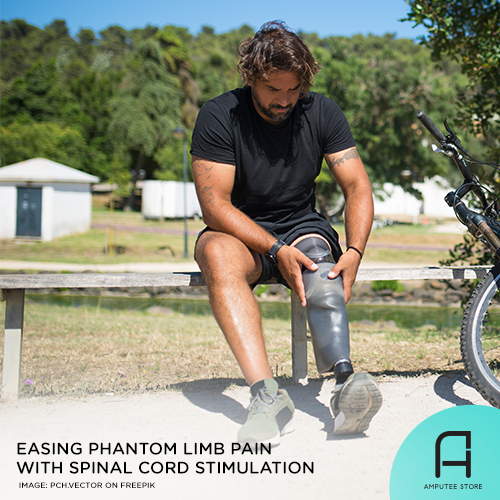Easing Phantom Limb Pain With Spinal Cord Stimulation
There are currently 1.5 million Americans who live with lower-limb amputation. Among that number, eight out of 10 experience some degree of chronic phantom limb pain. This pain often doesn't respond to medications and dramatically reduces quality of life. But researchers have found an accessible way to at least ease the pain—through spinal cord stimulation.

Scientists in rehabilitation have discovered that individuals who have undergone lower limb amputations can experience sensation in their amputated foot and find relief from phantom limb pain through spinal cord stimulation. Furthermore, they have observed that this technique can also enhance the balance and stability of prosthetic users by embedding pressure sensors on the insole of the prosthetic foot. These sensors activate electrical pulses that are transmitted to the spinal cord.
This proof-of-concept study was conducted by an interdisciplinary collaboration among physicians, neuroscientists, and engineers from the University of Pittsburgh School of Medicine, the University of Chicago, and Carnegie Mellon University. The results were published in December 2023 in Nature Biomedical Engineering.
According to the study's senior author, Lee Fisher, Ph.D., who is an associate professor of physical medicine and rehabilitation at Pitt, the research team used electrodes and stimulation devices that are already widely used in clinics and familiar to physicians. Despite the accessibility and familiarity of the materials, this approach still showed significant improvements in pain reduction and restoration of function.
The spinal cord stimulation technology used in the study works by replacing the severed links between the central nervous system and the sensory neurons in the amputated foot. This technology differs from the traditional stimulation system, which overrides pain neurons with another sensory signal. Think of rubbing a sore arm to relieve the pain.
The researchers then implanted two thin electrode strands over the spinal cord in the lower back and connected it to a small stimulation device. This device delivered electric pulses of varying frequency and amplitude, which were modulated by the researchers. The intensity of sensations were felt by the study participants in response to changing pressure on a prosthetic foot while walking.
Unlike previous research by other groups, Fisher and the team demonstrated that they could actively control spinal cord stimulation parameters to improve the study participants' balance control and gait. This approach proved effective even under challenging conditions, such as standing on a moving platform with eyes closed.
Furthermore, the study subjects reported an average reduction of 70% in phantom limb pain.
The study highlighted that this technology could work for people with extensive nerve damage due to traumatic amputation or chronic conditions like diabetes, as long as their spinal cord is intact.
The technology doesn't require expensive custom-made electrodes or rare surgical procedures, which makes it easier to implement on a larger scale. Fisher believes that this technology could become an important intervention for lower-limb amputees. With adequate support from industry partners, spinal cord stimulation for phantom limb pain could be available in clinics within the next five years.










































































